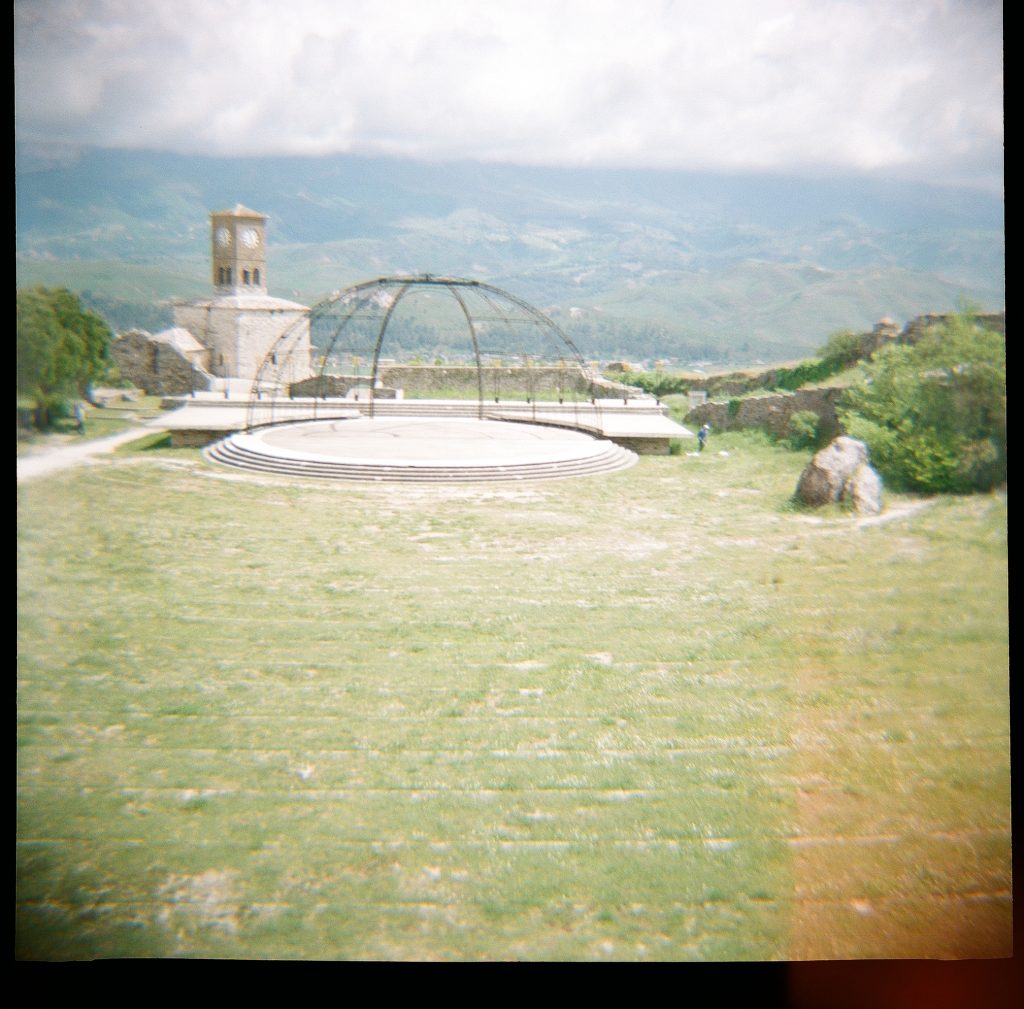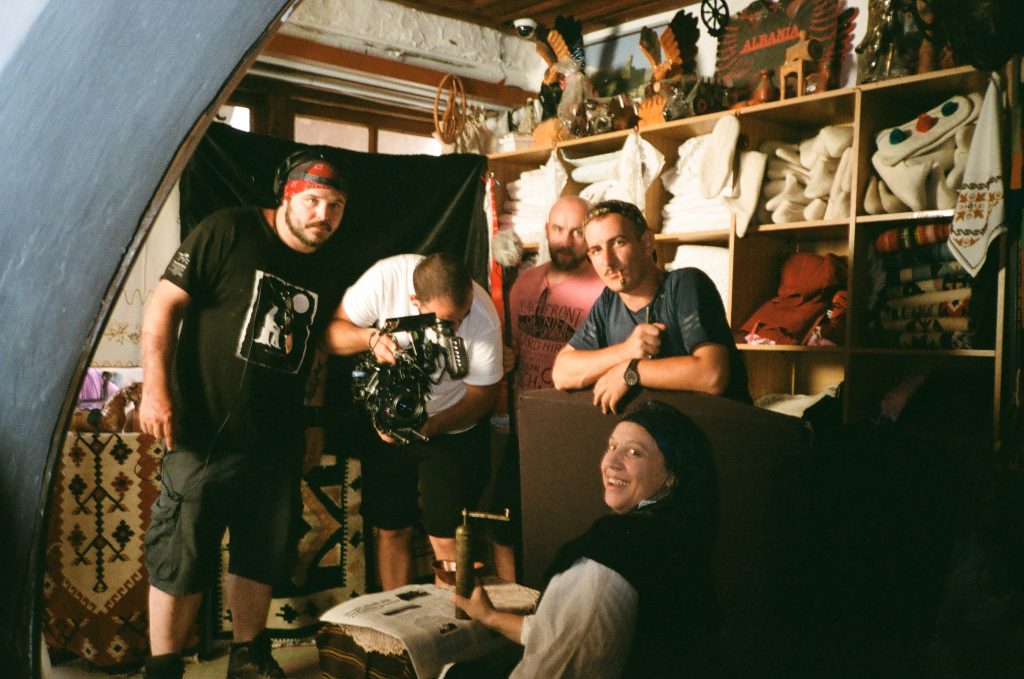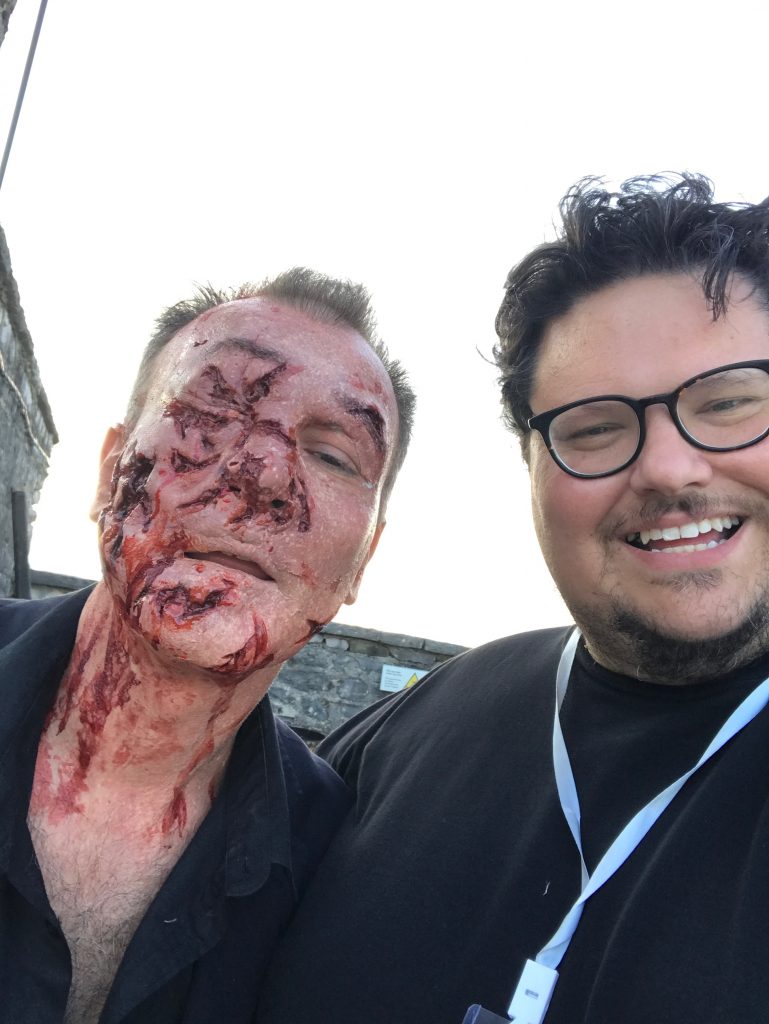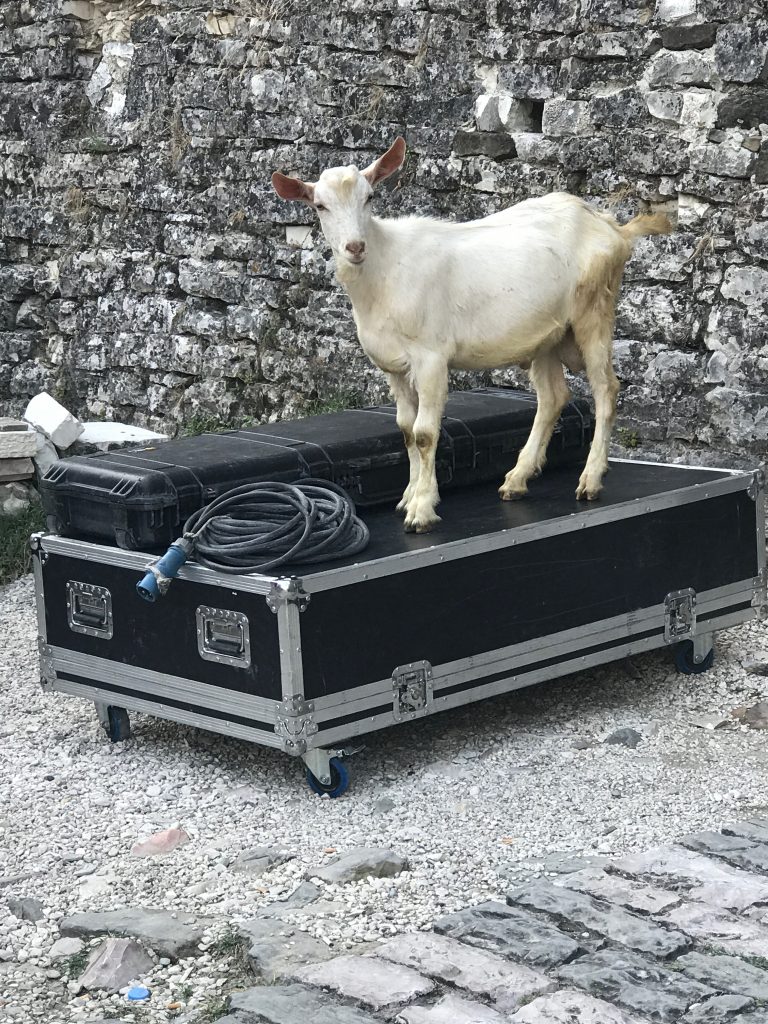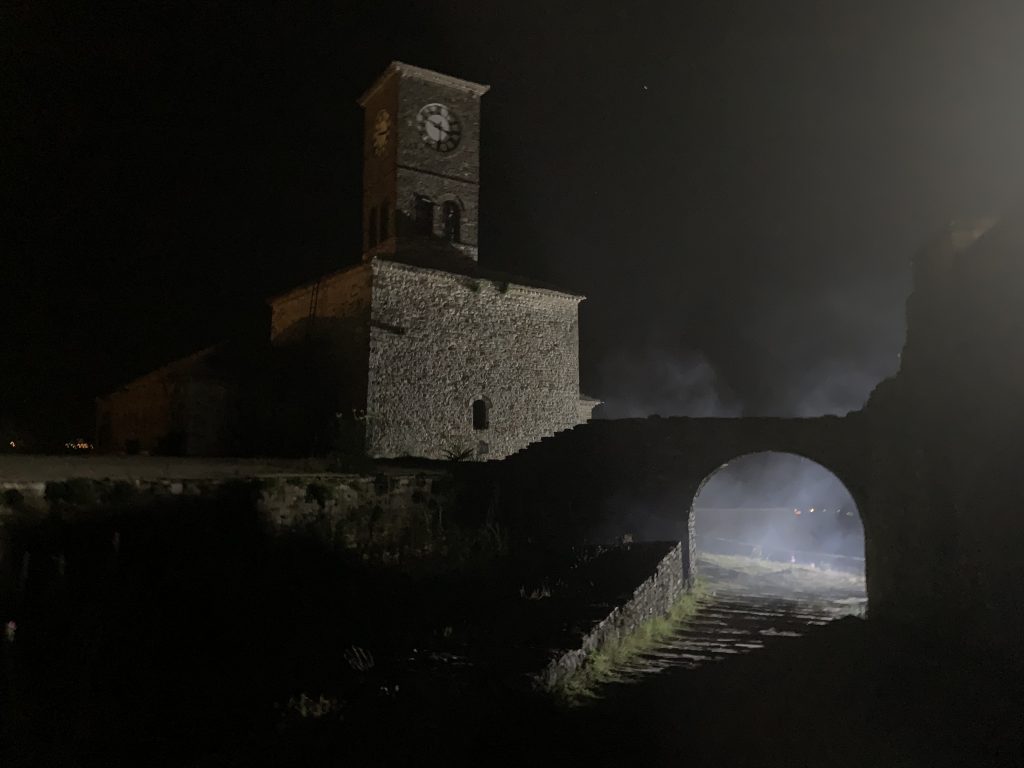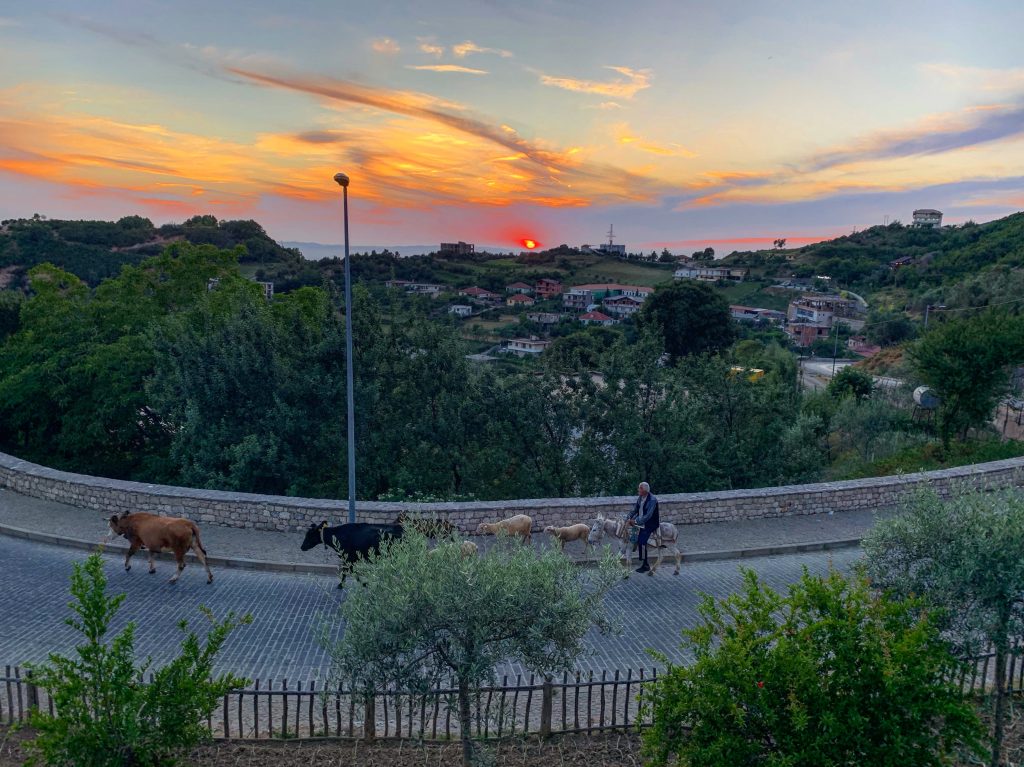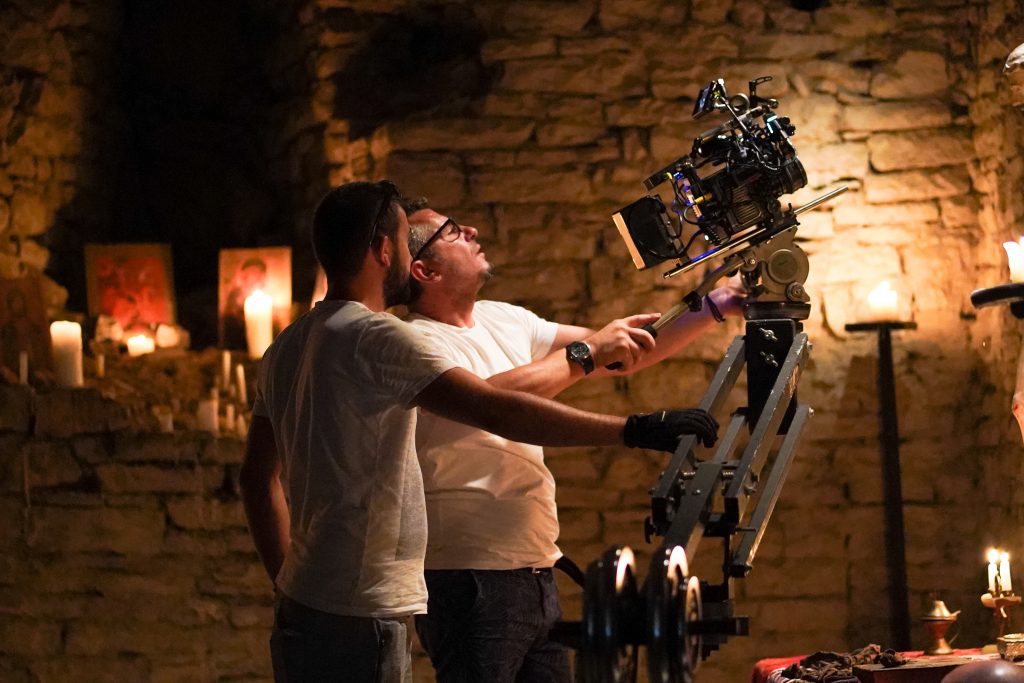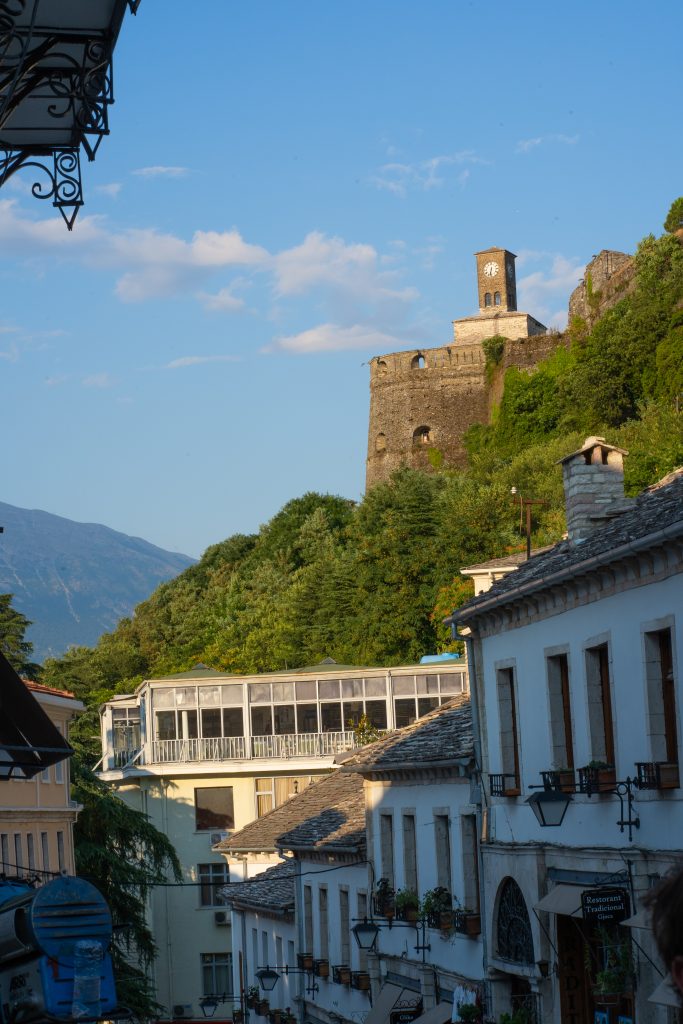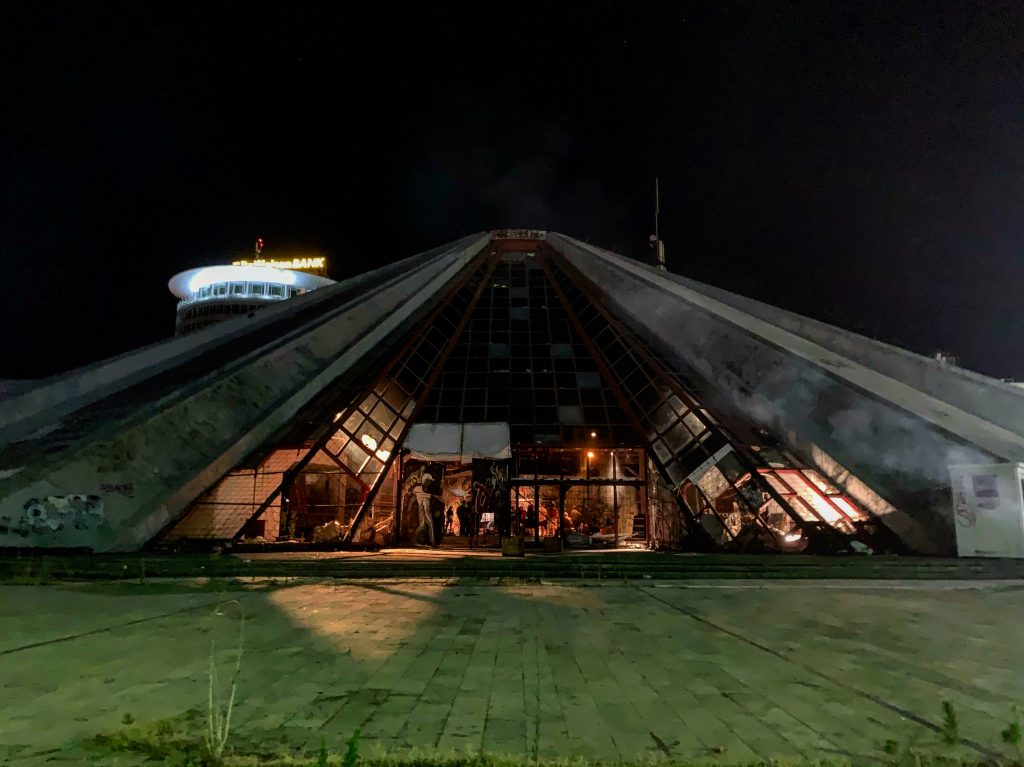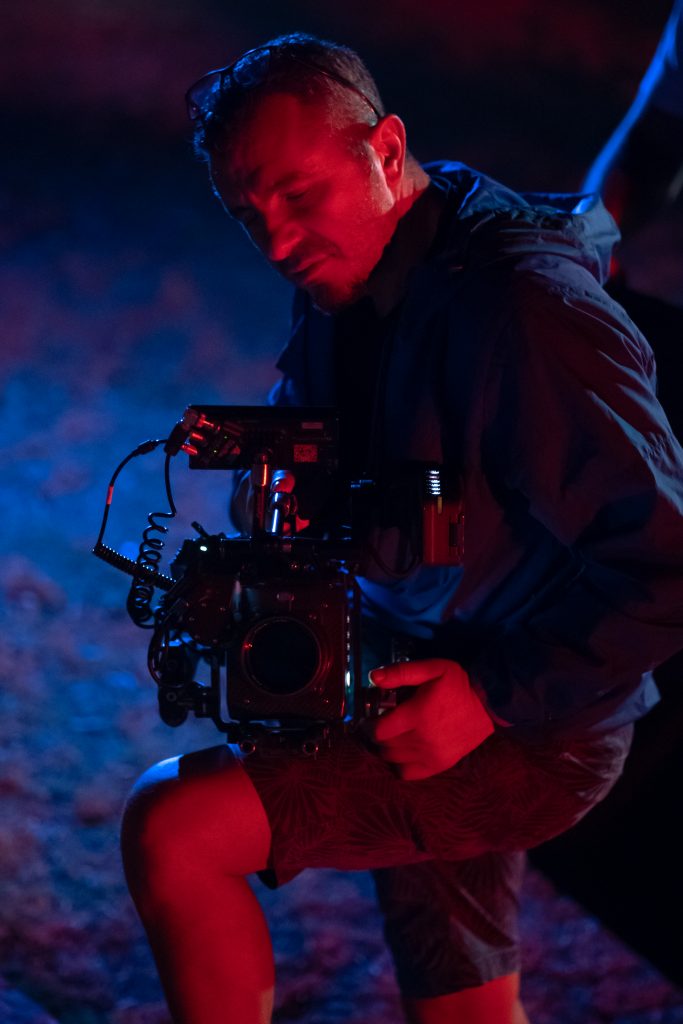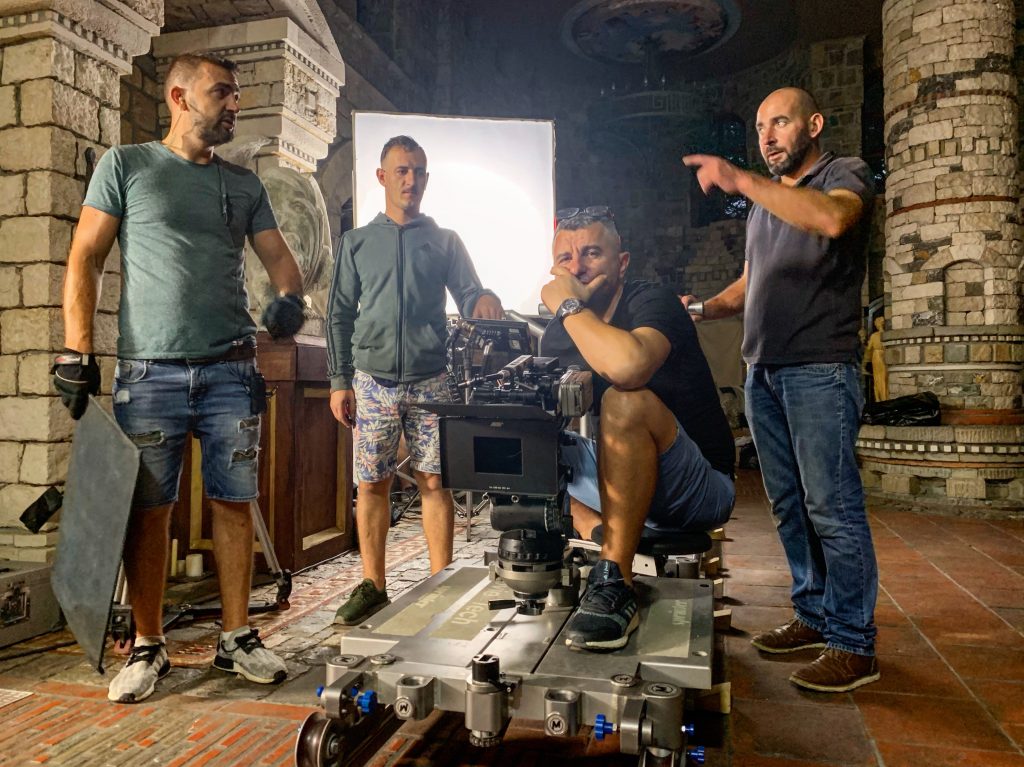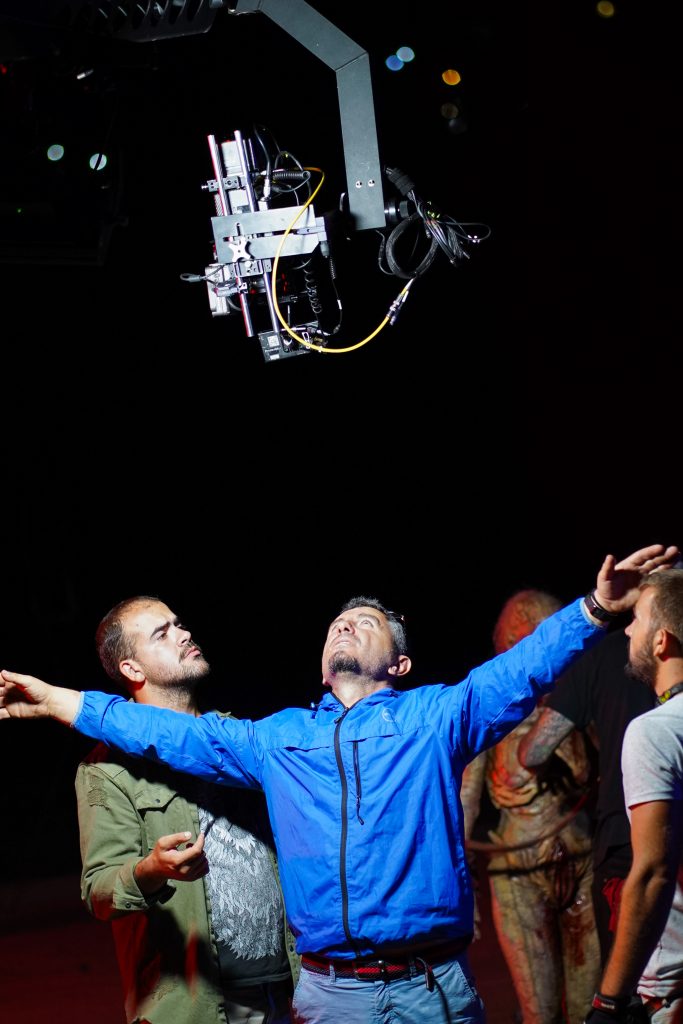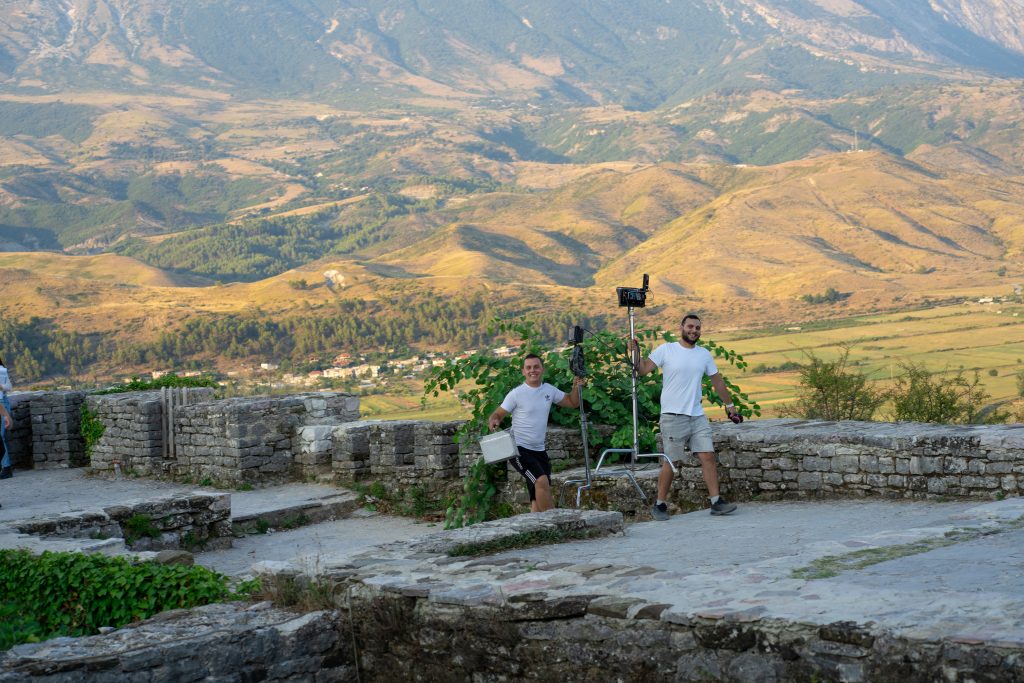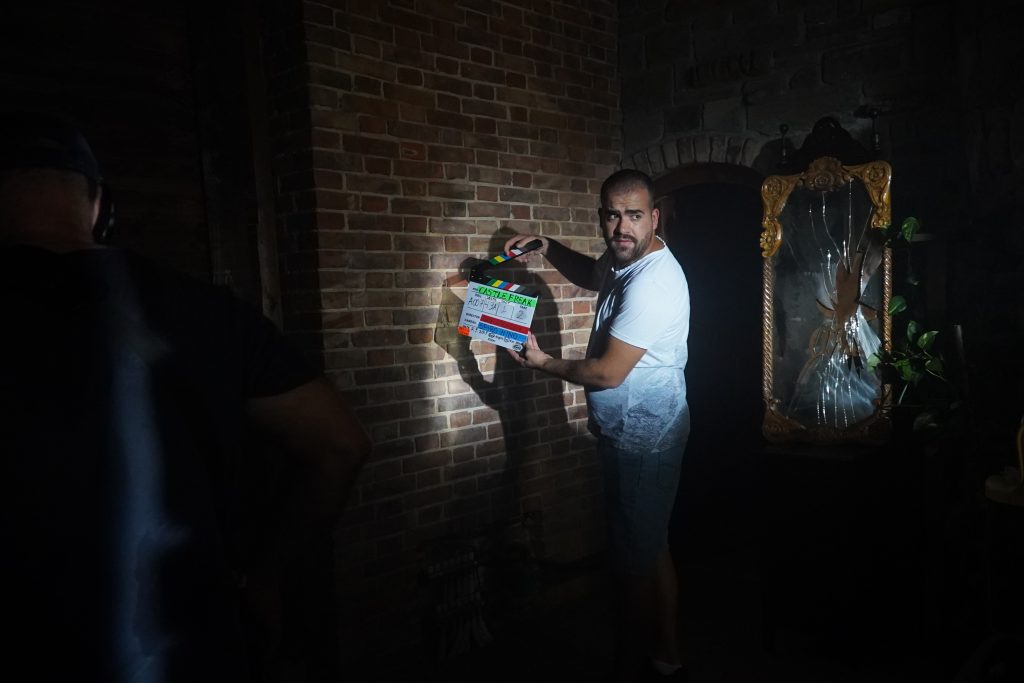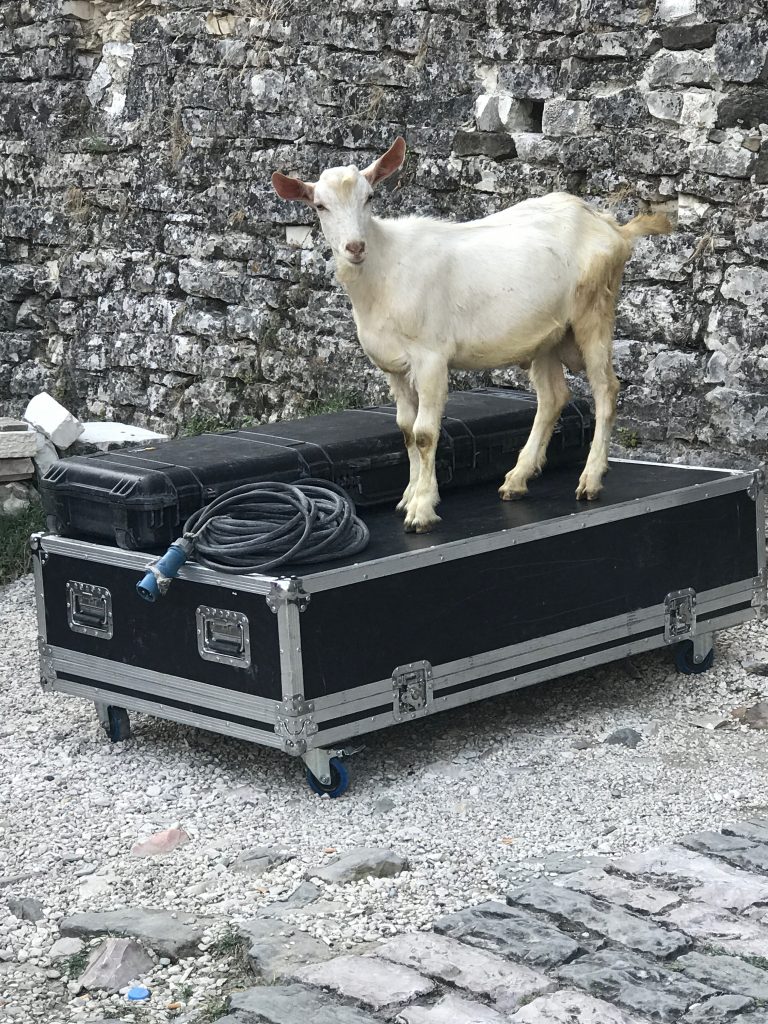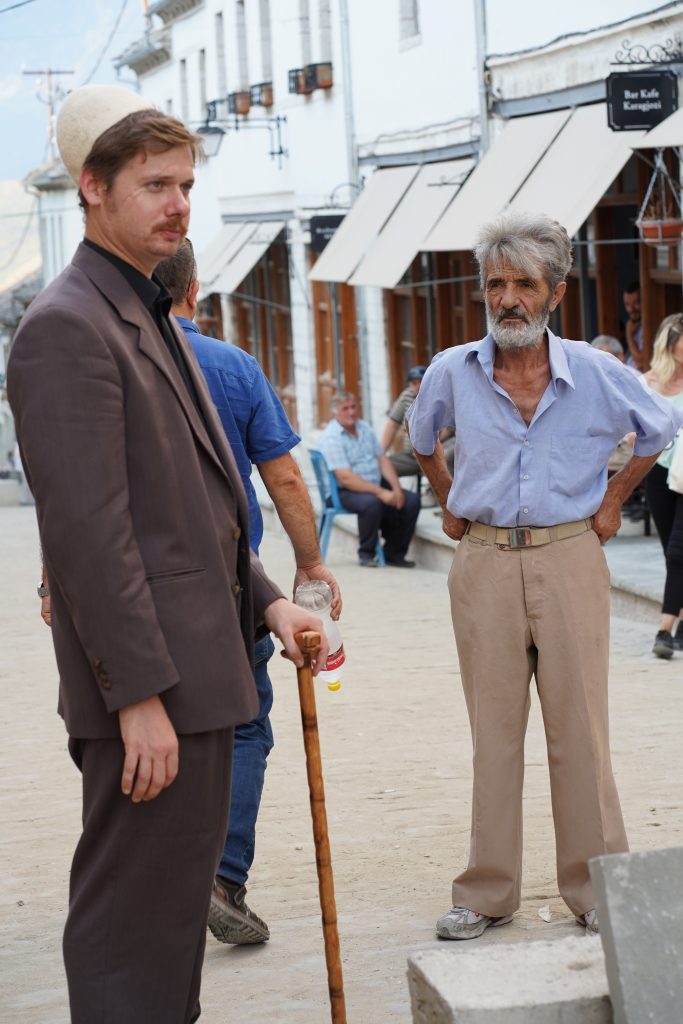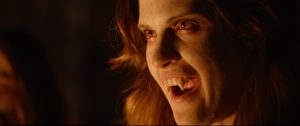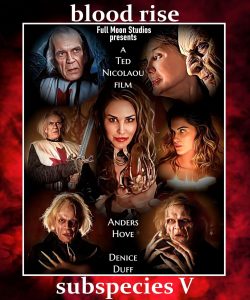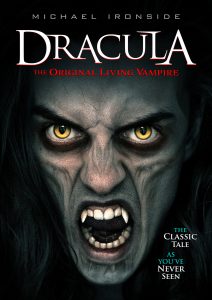by Seager Dixon & Justin Martell
w/ Matt Manjourides
Making an independent film is a hard and trying experience. The hours are long, and the work seems almost endless. When the physical is pushed to its limits, either by monetary restraints, time restraints, or in some unfortunate cases, quality restraints, the mental game steps in and creative problem solving becomes key. It is a delicate balance between ambition and reality. A game of chess in the world of art. Now, translate that back and forth to a language that roughly one tenth of one percent of the world’s population speaks fluently. Your game of chess has now turned into a tabletop adventure that not only has a distinct trapezohedron dice and playing card system but also includes a randomly generated multi-balled roulette style wheel mini-game. It’s one hell of game.
Although the continuing iterations of the Fast & Furious franchise are running out of locations, you probably won’t see Albania popping up on their short list. And that’s a shame. Odds are most Americans don’t even know where Albania is (across the Adriatic Sea from Italy and north of Greece.) Its history is as rich as it is mysterious. As a centralized trade point, connections in Albanian history can be found in both the Ottoman and Roman Empires. Going back to ancient history, arguments have been made that Alexander the Great was, in fact, Albanian. Castles and fortresses dot that various mountain ranges, looking down on the proud land of Skanderbeg. These unique location opportunities are what drew the production of Castle Freak to the Balkans.
Albania first popped up on our radar in 2017 during a research trip to Eastern Europe. We toured locations from the unrecognized rebel republic of Transnistria to the bustling backlots of Bulgaria and eventually passed through Albania. The country stood out immediately both because of its amazing locations ranging from its mediterranean coastline to Byzantine-era fortresses to communist relics as well as the distinct lack of other visiting American film crews.
The timing could not have been better. Shortly thereafter, founder of Troma Entertainment and creator of the Toxic Avenger Lloyd Kaufman was facing a dilemma for the production of his forthcoming adaptation of Shakespeare’s The Tempest, aptly titled #ShakesspearesShitstorm; how would he accomplish a complicated sequence for the film set on a boat in the middle of the ocean? Every way he looked at it, the scene would be prohibitively expensive to shoot in the U.S.
As Troma alumni, Lloyd asked how we might tackle the scene without having to scale back his vision. After a few lengthy skype calls discussing the logistics of adapting the scene for an Albanian Navy ship, New York City’s longest-running independent film studio made history when it became the first American company to utilize Albania for a story not set within the country, shooting it for Tromaville, New Jersey. The boat was bigger, ocean bluer, and it was all a third of the price of much less impressive stateside options.
That summer, The Last Drive-In with horror host Joe Bob Briggs aired on Shudder. Intended as a one-time event, so many people apparently tuned in that the 13-film marathon crashed Shudder’s streaming platform. Soon, the team was in Dallas, TX shooting Season One. Following a visit to the set by Fangoria, we were asked: “Can you find an Albanian castle for the upcoming remake of Castle Freak?” Two months later, we were back on the ground in Albania.
The location scouting process took place months before the first day of production. After multiple rounds of pictures and videos from the Albanian producing partners, the groundwork was set to come in and begin to work out the logistics of filming. This portion of scouting is often the hardest, and in some cases, heartbreaking. You can tell yourself over and over, “oh, we can make this work,” while looking at pictures and videos. But until you have stepped foot in the space, you can never be too sure. For weeks we drove around the capital of Albania, Tirana, and then down to the site of the castle, Gjirokaster (birthplace of former Albanian Communist leader Enver Hoxha and a one-way four-hour trip.) Each time finding solutions and new options to present to the director. Various interiors of restaurants, businesses, museums, and other locations were all auditioned to play as sets. With the budget and schedule given for the project, every set had to a preexisting location. Studio builds and backlots were way out of the question. Some locations required working with a local restaurant or hotel to provide rooms for hair and makeup, costumes, and special effects to work out of.
The castle, in particular, was a special case of logistics. Gjirokaster Fortress is a massive twelfth century structure. Seated on a mountaintop, overlooking the town, it is a sight to behold. The keep, arches, clock tower, catacombs, and centuries old stone walls scream for a starring role in a classic Hammer Horror film. Unfortunately for the budding filmmakers of the underground, Gjirokaster Fortress is also a national treasure and protected by the United Nations Educational, Scientific, and Cultural Organization (UNESCO.) And with that, comes tact. We were instructed by our Albanian producing partners to refrain from going into too many details with the fortress staff and in a very literal sense, let them do all the talking.
As you can imagine, Albania is not known for their horror movies. Their blossoming film community can be identified by their thoughtful dramas and character pieces, not blood, guts, and Freaks. Aside from Italian-born Jacopo After FX wizard and director Tate Steinsiek arrived in the country with several boxes full of bloody gags, we returned to the Hilton one evening during pre-production to find the hotel staff waiting for us. “The maid found the body in your room!” said a member of the staff, referencing a mangled corpse Tate had propped up on a chair and covered with a bloody sheet. “She almost had a heart attack. If we had not stopped her from calling the police, they would have been here waiting for you instead of us!”
In fact, when working with almost all our locations, we had to take into consideration that the property owners have likely never seen a horror film. Local reactions were a concern of our Albanian production team. The fear being a national controversy if the secret were to be let out. You have to keep in mind, in addition to being a former Communist surveillance state that at the time developed state of the art spying techniques, the population of Albania is roughly two million. The population of New York City is over eight million. Word travels quick in the Balkans. Monster suits had to be handled with stealth and care. Gallons of fake blood and various gored up silicon appendages had to be kept out of sight from non-crew on set. This added another layer of logistics on set. Because of this secrecy (and the fact that it’s a horror film) the majority of shoot days were actually night shoots. When the “grown ups” would leave at the end of their shifts, the crew would come in and get to work. With these caveats in mind and locations locked, we were set to get to work on “The Castle,” a drama centered around an American family that inherits a castle in Albania.
It’s fair to have reservations with working with an entirely different crew in an entirely different film industry in an entirely different country. But that’s where the reservations stopped when working with the local Albanian crew. World class, to say the least. In addition to securing Gjirokaster Fortress, our local producing partners helped us make history when we became the first foreign crew to shoot inside the famous Tirana “Pyramid,” a tantalizingly gaudy building built in 1988 as a museum to former dictator Enver Hoxha; vacant since the collapse of Albanian communism in 1991. Director of Photography, Spiro Nino, is a master craftsman. His crew of camera, grip, and electric technicians (all taught by him) were tireless in their efforts and execution. Each day required multiple set ups, running from one end of the castle to another. They went above and beyond. As did production designer, Luan Shkodra and his art department. The work that was done in the amount of time that was needed is unreal. Again, the locations were restaurants, they were store fronts, they were museums. All of the furniture had to be brought in or made. All of the art and sculptures that populate the castle halls had to be created. The locations were one of a kind, but the art department really brought them to life. Local hair and make-up head Jacopo Tomassini, who has pushed the limits of popular taste in Albania with his own body horror film The Obsessed, was essential in helping our FX team source supplies in a foreign land and ended up with an FX credit. Every member of our near forty person crew held themselves to that same high standard of craft, hard work, and dedication.
Two months of living and working in Albania had prepared the American production side of Castle Freak. We ate Albanian food and drank Albanian beer (shout out to Birra Korça and Birra Elbar.) We had our favorite restaurants, shops, night life establishments, knew enough Albanian phrases to get around town — and smooth things over when our drone crash landed in a family’s back yard (a shot of that crash is in the final film). Now it was time to drop in a bunch of young American actors and actresses who had never been to Albania and in some cases, had never left the United States. “Are there organic organic foods?” Yes! Big agriculture isn’t a thing yet in Albania, and nearly all of the food you find in restaurants can be considered farm to table, free from hormones and other unsavory bits typical of American food. The only corporate fast food restaurant in Tirana is a KFC found across the street from the former house of the aforementioned former Communist leader Enver Hoxha. “Can I bring my skateboard?” Not recommended! Driving in Albania is, let’s say, specialized. Unless you’re a local, it is not recommended, let alone occupying the same space on a skateboard.
A lot of questions, thoughts, and concerns were fielded our way leading up to the arrival of our American talent and producers. “Is it safe for Americans?” Yes! Albania is rated a level 1 on the US State Department’s 1 to 4 travel ranking (4 being “Do Not Travel.”) The UK, France, and Germany are all rated a level 2. “Do we need to worry about amenities?” Not exactly! The cities of Tirana and Gjirokaster each have wonderful hotels and facilities. The Dajti Mountains, however, not so much. There was a little game of expectations versus reality with working standards that everyone from the American side of production had to learn. It wasn’t like they had to sleep on the floor of an abandoned funeral home with sixty others but sometimes (most times) the castle would stop having running water two hours into the work day. What can you do? It’s a twelfth century castle.
In terms of workflow and communication between the two languages, three if you count the Italian digital imaging technician, that was expertly handled by our Albanian assistant director, Mateo Cingu. To put things into perspective, the entire camera, lighting, and grip departments spoke almost no English. This added many extra steps in not only the camera and light set ups but also the blocking for the actors. A simple adjustment from the director to the DP or the DP to an actor or an actor to the sound recordist or the sound recordist to the director generally came with a translation back and forth. It was a rough first few days but eventually a new language of Albanian, English, and filmmaking was established, and these once perceived limitations were lifted. With everything in place and every possible tool at their disposal (in Imperial and metric) it was left to Tate and Barbara to evoke the spirit of the original Castle Freak all while creating something entirely new and equally haunting. As producers, our work was just about done.
On the second to last day of shooting, we received a call from our Albanian producing partner. He was on his way to have a meeting with the Director of Gjirokaster Fortress Museum. It sounded dire. All our attempts at hiding our monstrosity from the powers that be had been in vain. A tour guide at the museum had been digging through our trash after each day of shooting. She was collecting the small script inserts used for filming each scene. Piece by piece she put together the script and discovered the truth. We weren’t there to film to period piece drama, “The Castle.” We were filming “Castle Freak.” Sometimes even when you roll the perfect critical attack on your trapezohedron die and pull the perfect card combination, one of the balls from the roulette style wheel gets you. “Oh, I don’t care. Why didn’t you just tell me in the first place?” said the Director of the Museum. And then again, sometimes the other roulette ball gives you a free pass. But hey, that’s independent filmmaking.
—
Justin Martell and Matt Manjourides were producers on Fangoria’s Castle Freak with Seager Dixon serving as Unit Production Manager. Through their company Not The Funeral Home, the team also produces The Last Drive-In with Joe Bob Briggs which is currently available on Shudder. In 2017, they co-founded Pioneer Media, offering a full range of production services for filmmakers shooting in Eastern Europe, Asia and other unique destinations. Visit mediapioneers.net for additional information.

